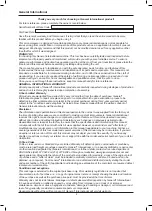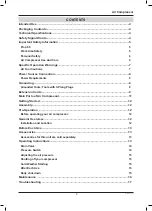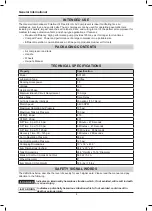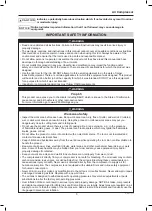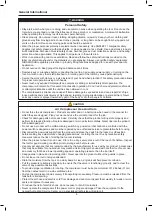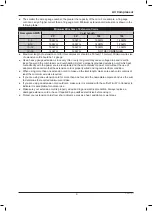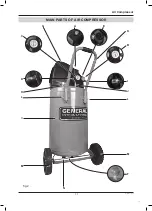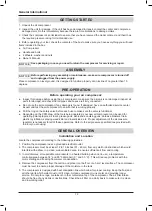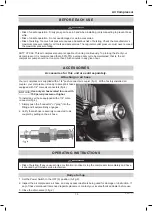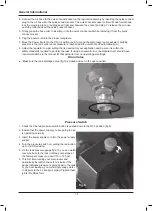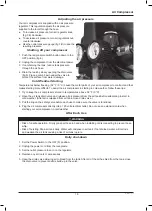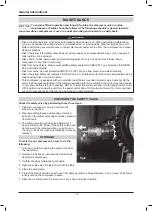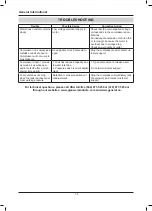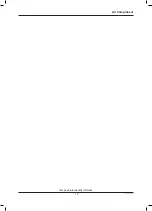
16
General International
MAINTENANCE
To ensure efficient operation and longer life of the air compressor unit, a routine
maintenance schedule should be followed. The following schedule is geared toward a
consumer whose compressor is used in a normal working environment on a daily basis.
WARNING
•
Risk of unsafe operation. Unit cycles automatically when power is on. When performing maintenance,
you may be exposed to voltage sources, compressed air, or moving parts. Personal injuries can occur.
Before performing any maintenance or repair, disconnect power source from the compressor and bleed
off all air pressure.
•
Risk of bursting. If the safety valve does not work properly, over-pressurization may occur, causing air
tank rupture or an explosion.
•
Risk of burn. Tubes, pump head, and surrounding parts are very hot; do not touch these. Allow
compressor to cool prior to servicing.
•
Risk from flying objects. Always wear certified safety equipment: ANSI Z87.1 eye protection (CAN/CSA
Z94.3 with side shields).
•
Risk from noise. Use ear protection ANSI S12.6 (S3.19) as air flow noise is loud when draining.
•
Risk of bursting. Water will condense in the air tank. If not drained, water will corrode and weaken the air
tank causing a risk of air tank rupture.
•
This compressor is equipped with an automatic reset thermal overload protector which will shut off the
motor if it becomes overheated. If the thermal overload protector is actuated, the motor must be allowed
to cool down before start-up is possible. NOTE: To reset the motor overload, turn the power switch to the
OFF position and unplug the unit from the power outlet. Allow 10 minutes (minimum) for motor overload
cut-out to cool and reset. Unit can then be plugged in and re-started.
CHECKING THE SAFETY VALVE
Check the safety valve by performing these three steps:
1. Plug the compressor in and run until shut-off
pressure is reached.
2.
Wearing safety glasses and hearing protection,
pull out on the safety valve ring to release pressure
from the tank.
3. The safety valve should close automatically at
approximately at 40-50 psi. If the safety valve does
not allow air to be released when you pull out on
the ring, or does not close automatically, it must be
replaced.
STORAGE
To store the air compressor, be sure to do the
following:
1. Turn the unit off and unplug the power cord from
the receptacle.
2.
Remove all air hoses, accessories, and air tools
from the air compressor.
3. Perform the daily maintenance schedule.
4. Open the drain valve to bleed all air from the tank.
5.
Close the drain valve.
6. Protect the electrical cord and air hose from damage (such as being stepped on or run over). Wind them
loosely around the compressor handle.
7.
Store the air compressor in a clean, cool, dry, safe, and indoor location.
NOTICE
fig.8

